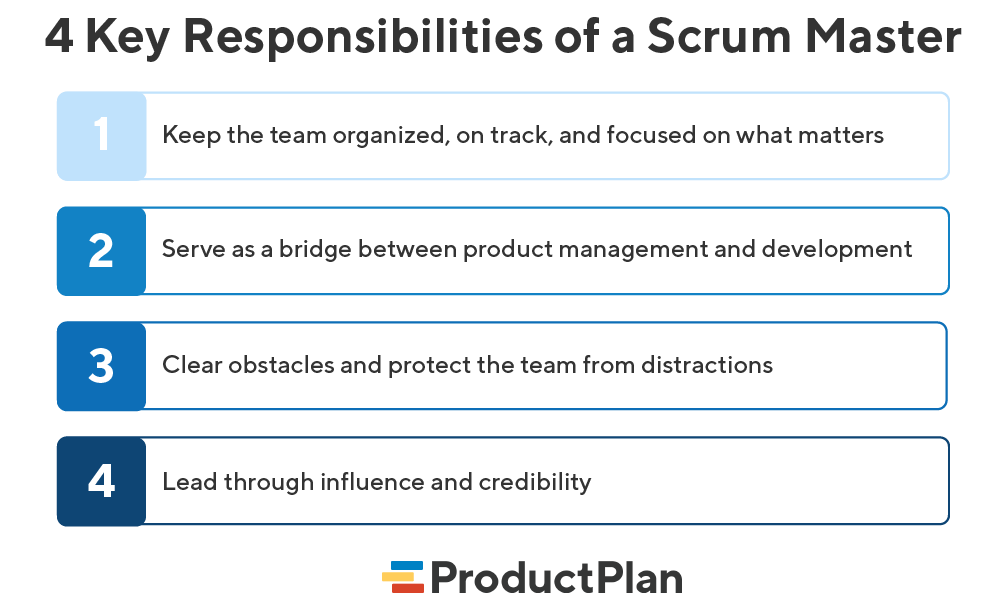Introduction
In the realm of Agile project management, the Scrum Master is often described as the guardian of the Scrum framework. This individual is responsible for ensuring that teams adhere to the principles and practices of Scrum, thereby enabling organizations to deliver valuable products efficiently. While the role of a Scrum Master might seem straightforward at first glance, it encompasses a wide range of responsibilities and brings numerous benefits to the table.
In this blog post, we will explore the multifaceted role of a Scrum Master, delving into their key responsibilities and highlighting the advantages they offer to both the development team and the organization as a whole.
Responsibilities of a Scrum Master
Facilitating Scrum Events: One of the primary responsibilities of a Scrum Master is to facilitate Scrum events, such as Sprint Planning, Daily Standup Meetings, Sprint Review, and Sprint Retrospective. They ensure that these events run smoothly and serve their intended purpose.
Removing Impediments: Scrum Masters act as problem solvers. They identify and remove impediments that hinder the development team’s progress. Whether it’s a technical issue or a bureaucratic roadblock, the Scrum Master is there to clear the path.
Coaching and Mentoring: Scrum Masters coach the team on Scrum principles and best practices. They help team members understand the framework and guide them in improving their processes continually.
Protecting the Team: Scrum Masters shield the team from external disruptions and unnecessary interference. They create a protective barrier around the development team, allowing them to focus on their work.
Facilitating Collaboration: Collaboration is a cornerstone of Agile methodologies. Scrum Masters foster collaboration between team members, stakeholders, and other teams to ensure alignment and effective communication.
Maintaining Scrum Artifacts: Scrum Masters help in maintaining Scrum artifacts, such as the Product Backlog, Sprint Backlog, and Burndown Charts. They ensure that these artifacts are up-to-date and reflect the current status of the project.
Benefits of Having a Scrum Master
Improved Productivity: With a Scrum Master’s guidance, teams can work more efficiently. They are less likely to encounter roadblocks, and issues are resolved quickly, leading to improved productivity.
Higher Quality Products: Scrum Masters promote continuous improvement and focus on delivering high-quality products. They encourage practices like automated testing and code reviews, which contribute to better product quality.
Better Predictability: Scrum Masters help teams estimate their work accurately and plan their Sprints effectively. This results in better predictability, making it easier for stakeholders to plan and prioritize.
Increased Customer Satisfaction: By ensuring that the team delivers value in every Sprint, Scrum Masters contribute to higher customer satisfaction. Customers receive regular updates and can provide feedback, ensuring their needs are met.
Reduced Risk: Scrum Masters identify and address risks early in the project. This proactive approach minimizes the chances of project failure or costly delays.
Challenges Faced by Scrum Masters
While the role of a Scrum Master is undeniably valuable, it comes with its own set of challenges:
Resistance to Change: Teams or organizations new to Scrum may resist adopting its principles. Scrum Masters need to be adept at managing this resistance and promoting a culture of openness and adaptability.
Lack of Authority: Scrum Masters typically do not have formal authority over team members. They rely on influence and persuasion to drive change and improvements.
Balancing Act: Striking a balance between facilitating and coaching can be challenging. Scrum Masters must know when to step in and when to let the team self-organize.
Continuous Learning: The Agile landscape is constantly evolving. Scrum Masters need to stay updated with the latest trends and practices to remain effective.
Conclusion
In conclusion, the Scrum Master is a linchpin in the Agile development process, playing a pivotal role in ensuring that teams follow the Scrum framework and deliver value to the organization. Their responsibilities encompass facilitation, problem-solving, coaching, and protection, all geared towards achieving project success.
The benefits of having a Scrum Master are numerous, including improved productivity, higher product quality, and increased customer satisfaction. However, they also face challenges, such as resistance to change and the need to continuously adapt and learn.
Overall, the Scrum Master is a vital asset to any organization practicing Agile development, helping teams navigate the complexities of modern software development and delivering results that matter.


